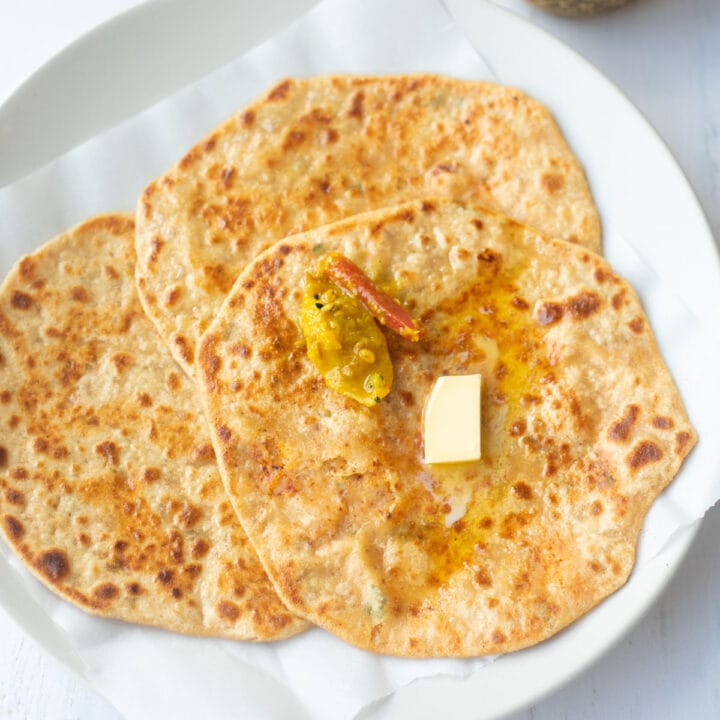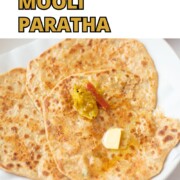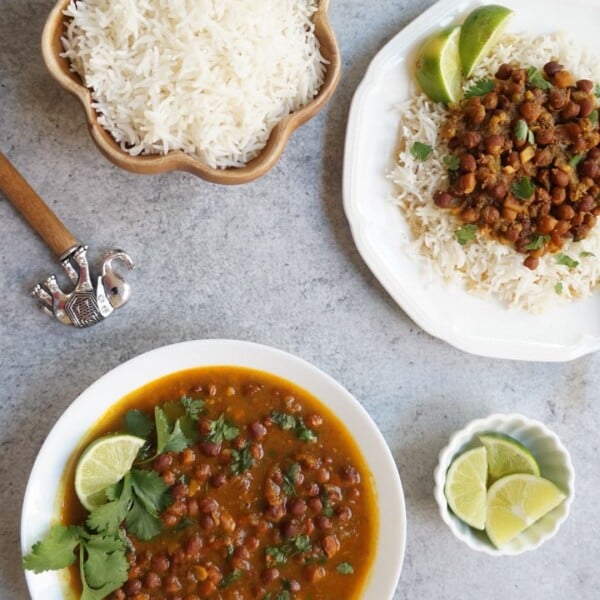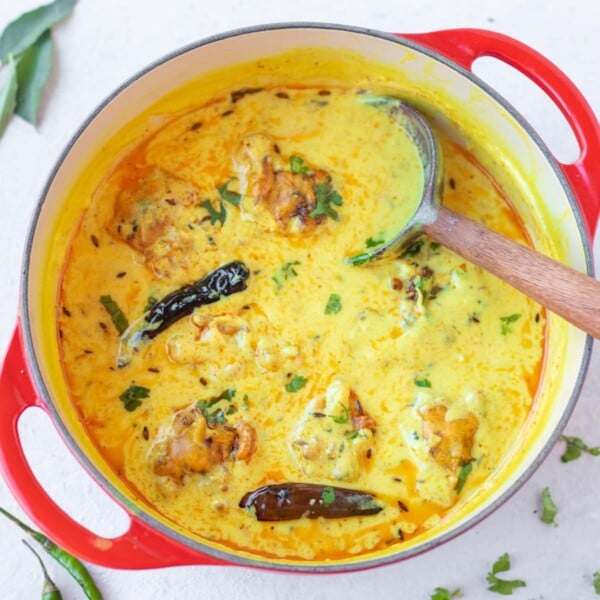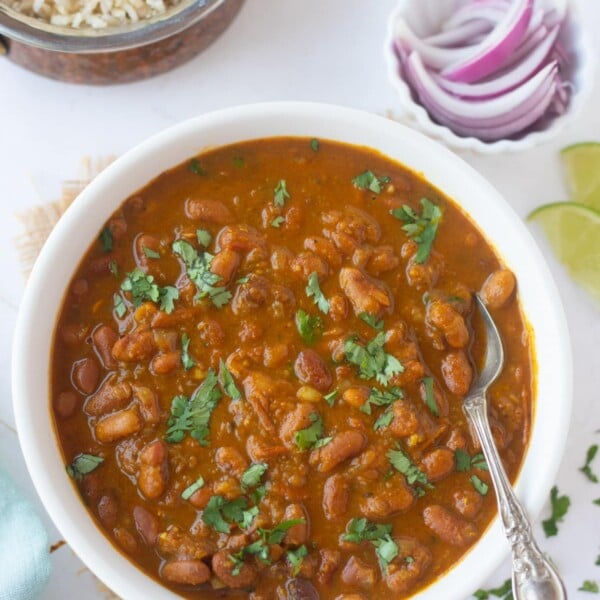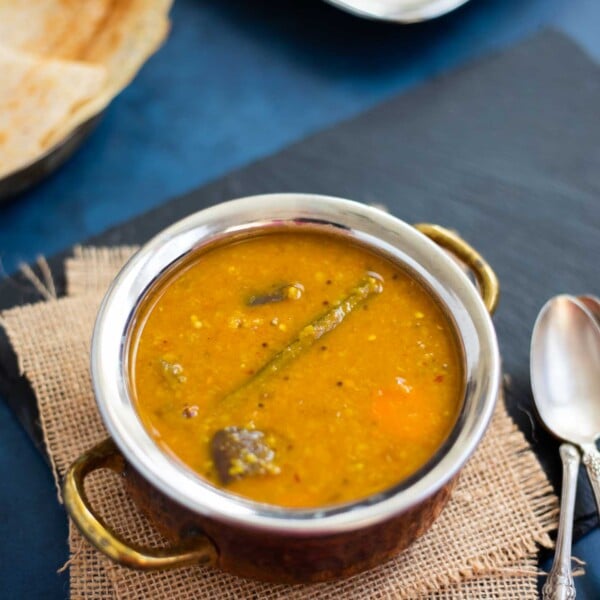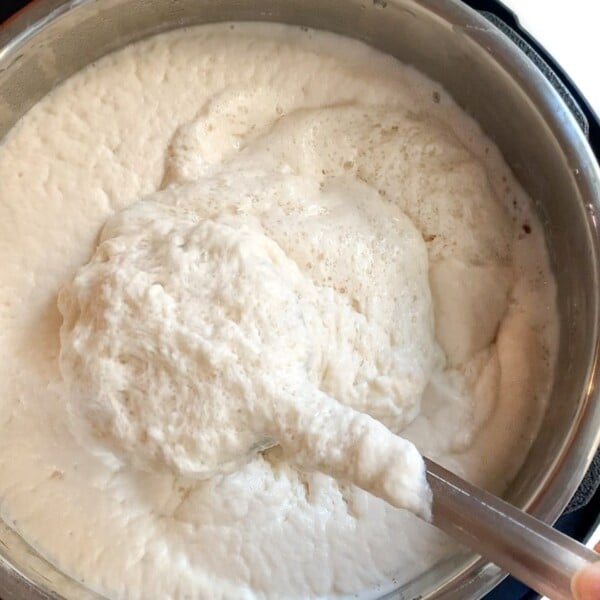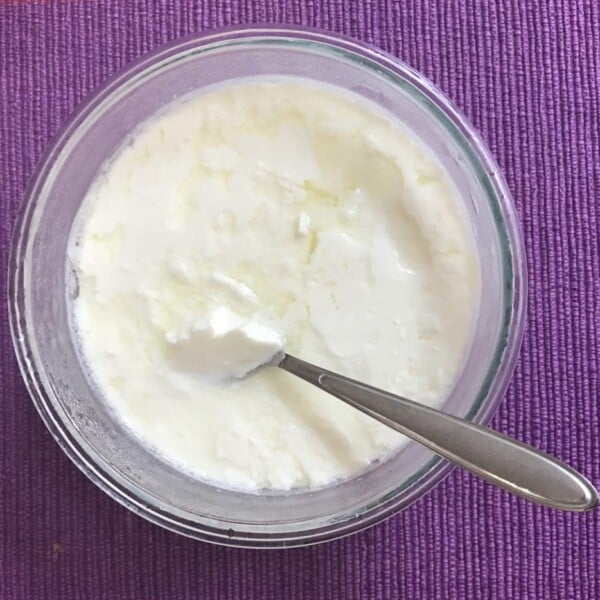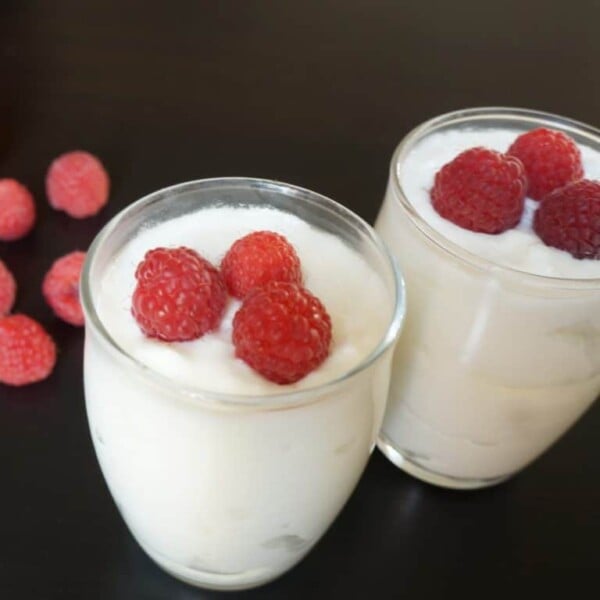Mooli Paratha or Mooli ke Paranthe is a flavorful and nutritious stuffed flatbread made with grated white radish, spices, and whole wheat flour. Serve these mooli parathas for a traditional Punjabi breakfast with pickles and yogurt.
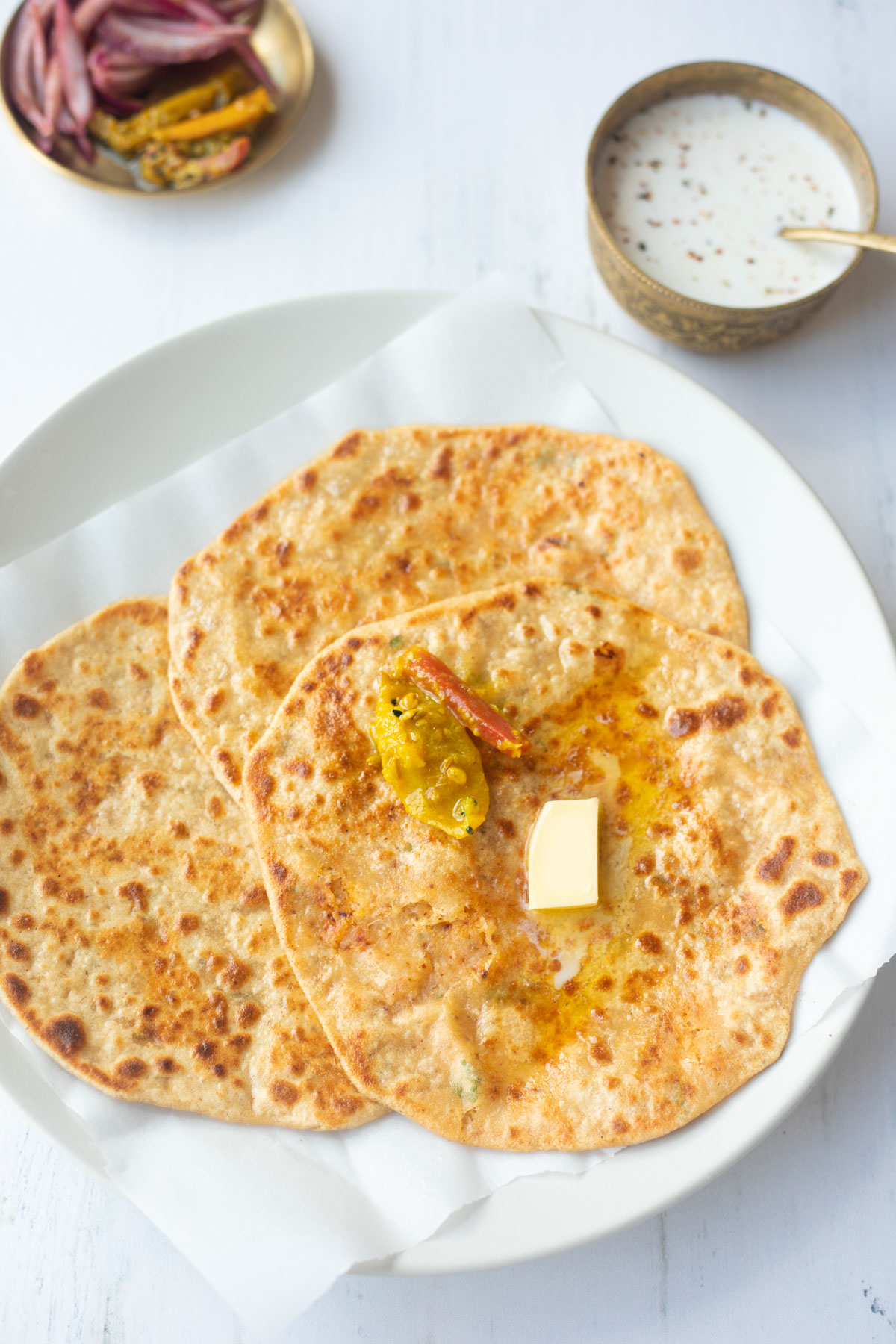
If you would peek in during breakfast in a Punjabi home, you will see paratha with dahi and achar for sure! We Punjabi’s love our parathas for breakfast, and we make them with many ingredients – Aloo Paratha, Methi Paratha, Broccoli Paratha, Cheese Paratha, Pumpkin Paratha, and many more.
Let’s make another of our favorites – Mooli Paratha. Many people don’t like to eat Mooli/Radish. It has a peculiar, pungent taste and smell. However, when you grate and spice the mooli and add it as a stuffing to paratha, they are a miracle!
The mooli parathas are delicious and can be enjoyed by everyone. My mom made the best mooli parathas, and I learnt how to make them from her. Serve alongside chai or dahi and pickle for a heartwarming breakfast or lunch!
Table of Contents
Watch How to Make Mooli Paratha
What is Mooli Paratha?
Mooli Paratha is a delectable and traditional Indian flatbread that holds a special place in Punjabi cuisine. It is a delightful stuffed paratha made with grated white radish, a vegetable commonly known as Mooli or Daikon. This dish is cherished for its irresistible taste and wholesome goodness.
Mooli Paratha is often served hot with white butter, pickle, raita, or a cup of hot chai, making it a satisfying and wholesome meal. It can be enjoyed for breakfast or as a delightful main course. The comforting flavors and unique blend of spices make Mooli Paratha an absolute treat, and it’s a must-try to explore the delicious world of Indian cuisine.
If you like radishes, check out 10 Indian Radish Recipes.
Ingredients
For the Dough:
- Indian Whole Wheat Flour: Wheat flour or Atta is used to make the dough. It is easily available at the Indian grocery store.
- Salt : Adjust it according to your taste preferences.
- Oil: A small amount of oil is added to the dough.
- Water: It is added to the flour to form a smooth and elastic dough.
For the Stuffing:
- White Radish: Fresh and juicy white daikon radish is the star ingredient of the stuffing. It is best to use fresh and tender radishes.
- Ginger: It gives the stuffing a spicy kick that makes it taste and smell better.
- Green Chili Pepper: You can add or leave out the green chili depending on how hot you prefer your paratha.
- Spices: You’ll need red chili powder, ground cumin, carom seeds, and salt. I highly recommend carom seeds for this paratha, as they help reduce the flatulence caused by radishes.
- Cilantro: Fresh cilantro adds color and flavor to the paratha. I like a lot of cilantro in the stuffing.
How to Make Mooli Paratha?
Make the Dough
If you are familiar with making roti/chapati, the dough for parathas is pretty similar. You can also use a stand mixer to make the dough.
In a wide bowl, take whole wheat flour, a.k.a ‘Atta’ in Hindi. Make a well in the center. Add salt, oil, or ghee, and a little water at a time.
When mixing and kneading the dough, add the water in small amounts. Do not pour the water all at once; otherwise, you will get a slushy mess.
Bring the ingredients together and knead for 8-10 minutes to form a smooth, soft dough. If necessary, add more water. Cover with a damp cloth and set aside the dough for around 20-30 minutes.
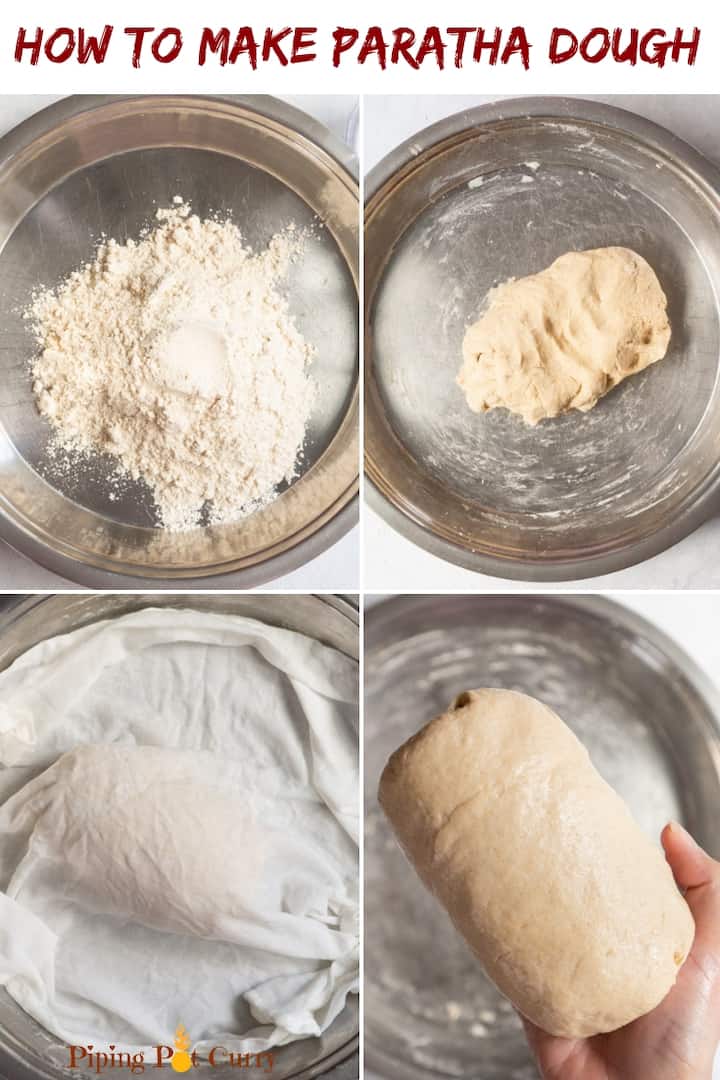
Make the Mooli Stuffing
Peel the skin of the radish and grate it using a medium-sized grater.
Radish releases a lot of water. Hence, we want to set the grated radish aside for 15-20 minutes and then squeeze out the water by pressing it between your palms or using a muslin cloth.
Pro-Tip: The above step of squeezing the water from the grated radish is an important step, as if there is much moisture in the radish, the parathas can break while rolling.
Combine the grated radish with ginger, chopped green chili (if using), red chili powder, ground cumin, carom seeds, salt, and finely chopped cilantro. Mix the ingredients well.
Pro-tip: It is important to add carom seeds when cooking with mooli. Radish can cause gas and bloating for some people. Adding carom seeds helps to reduce the flatulence caused by radishes.
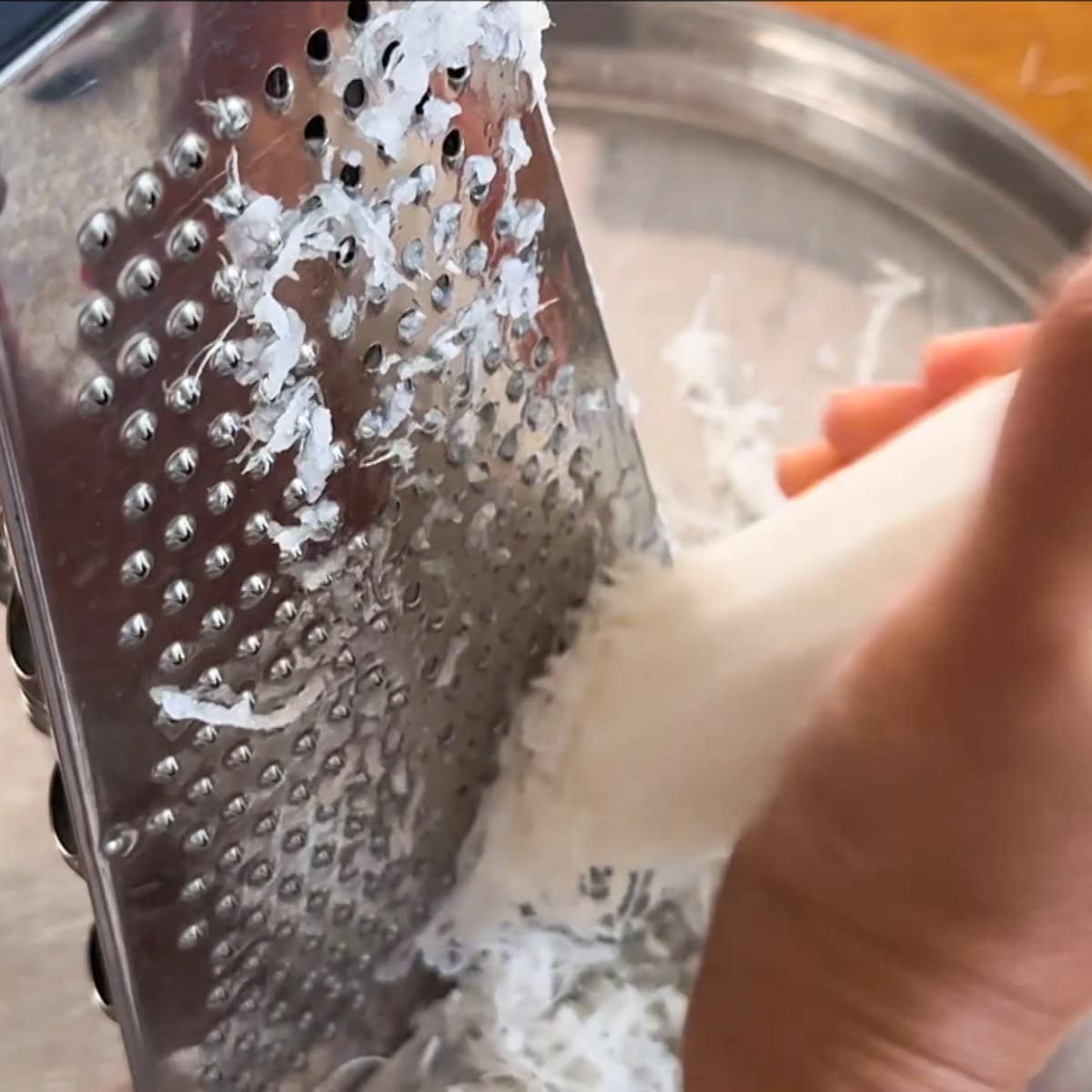
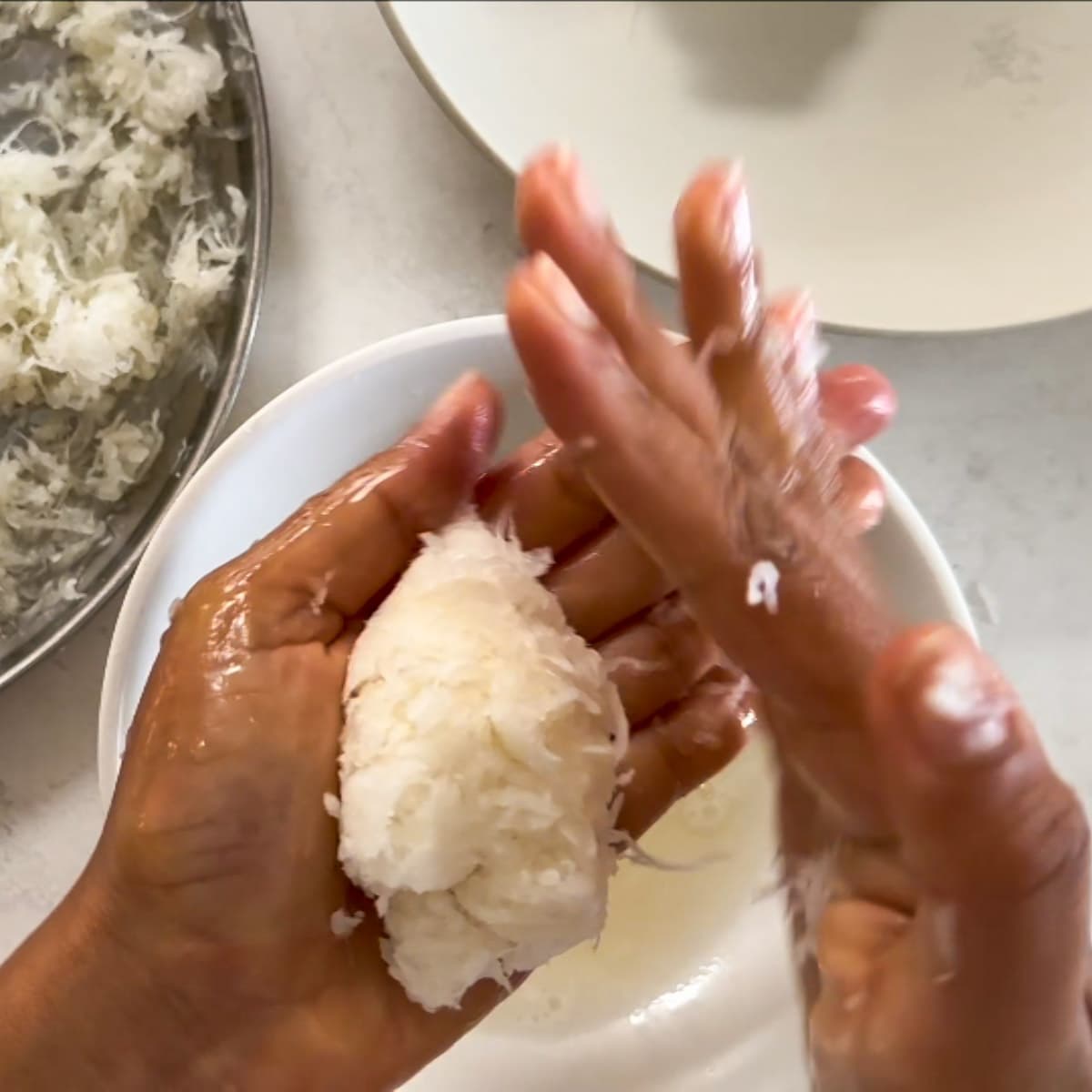
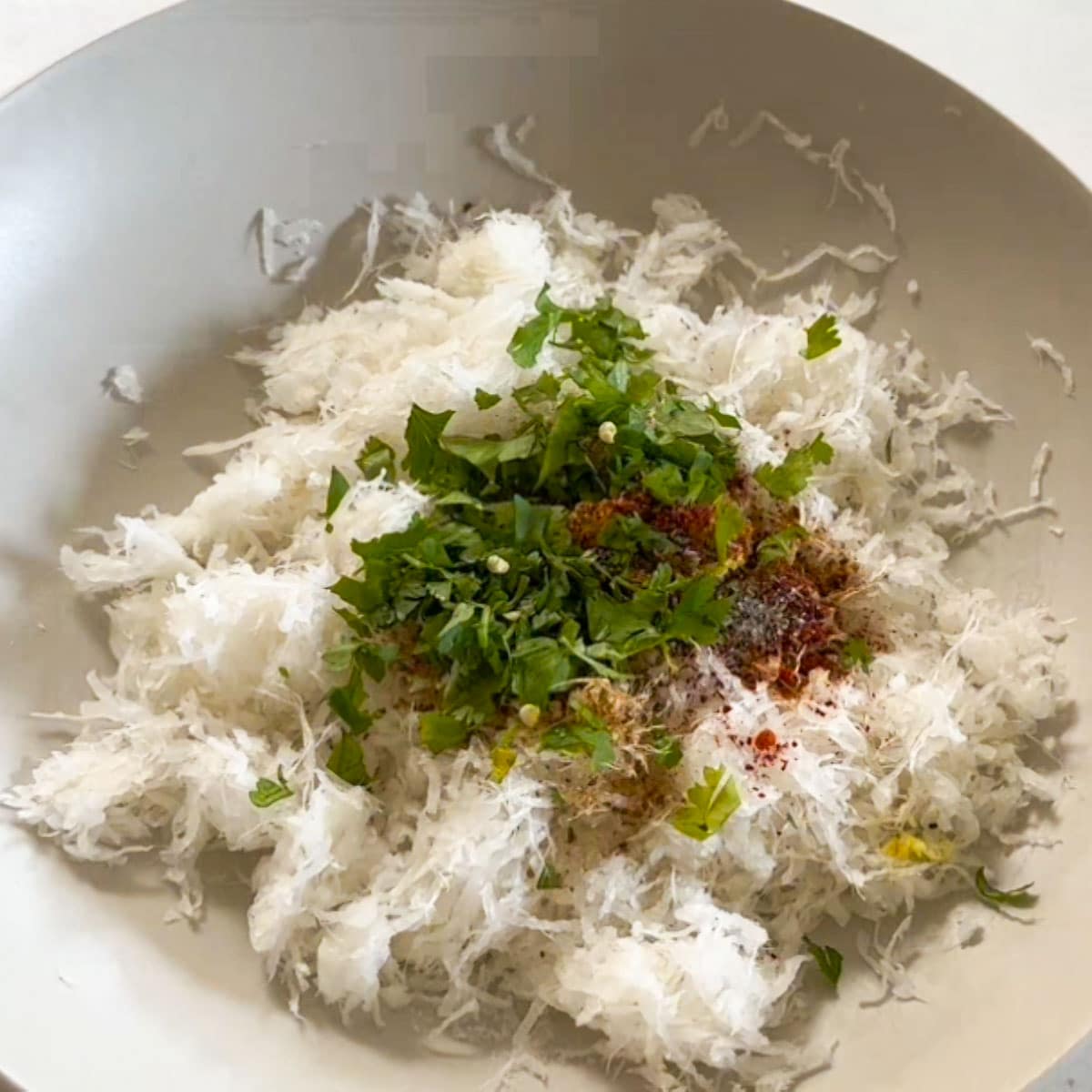
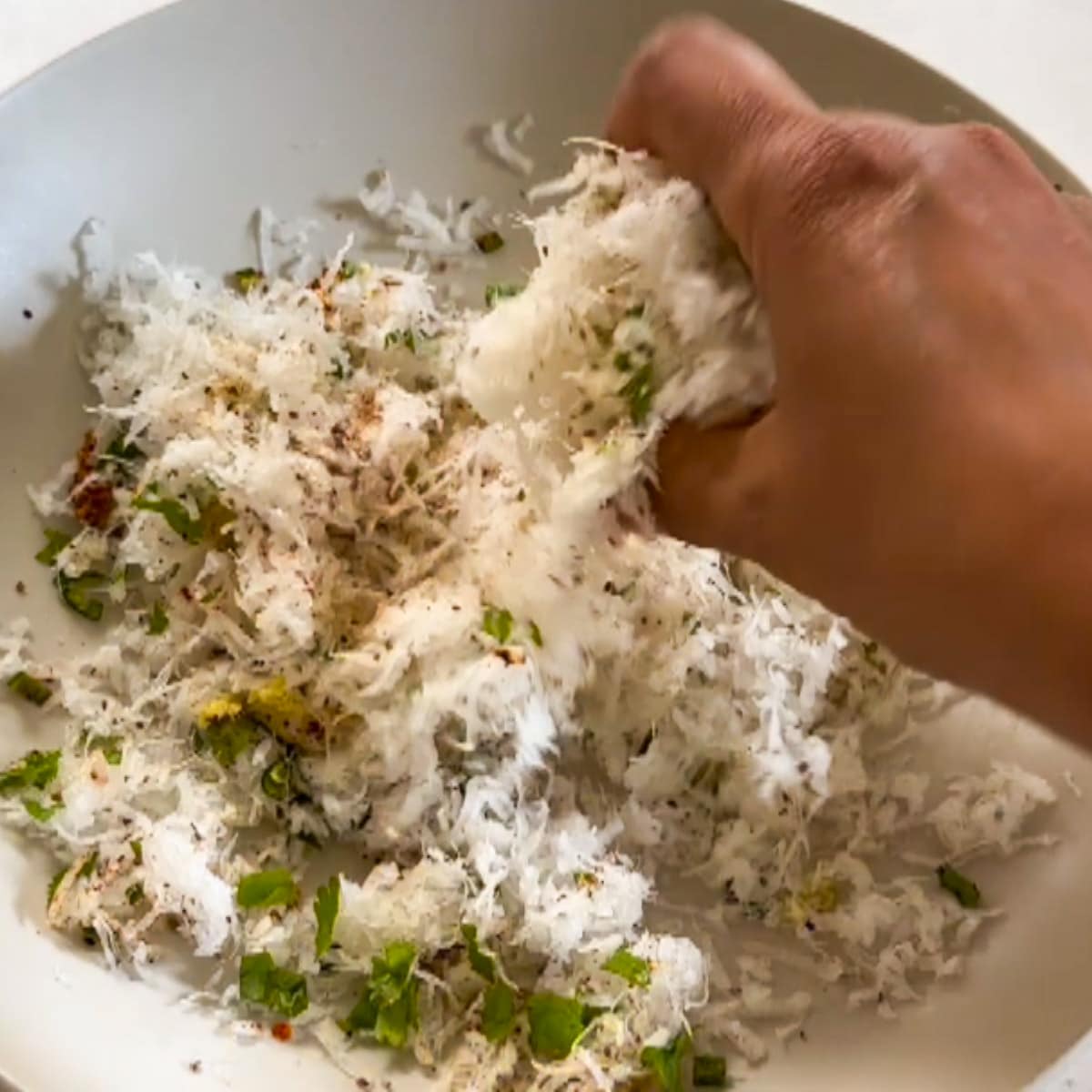
Roll the Paratha
This is the most important step in making stuffed parathas and can be a little intimidating initially. This requires some practice. But once you get used to it, it is actually not that hard!
Divide the dough into equal portions (about 55-60 grams) and roll them into smooth balls. Dust the dough ball with dry flour and roll it into a 5-inch disc using a rolling pin.
Optionally, spread some ghee on the rolled dough. Place some stuffing in the center, leaving about 1 inch of space from the sides.
Gather the edges and form pleats to create a smooth ball with the stuffed dough.
Roll the dough gently and evenly, dusting with dry flour as needed. Aim for a 7-8 inch diameter paratha.
Pro-tip: Sometimes you have parathas that have thicker dough at the center. To avoid that, you can remove any extra dough at the top of the dumpling. This makes sure that the filling spreads evenly throughout the paratha.
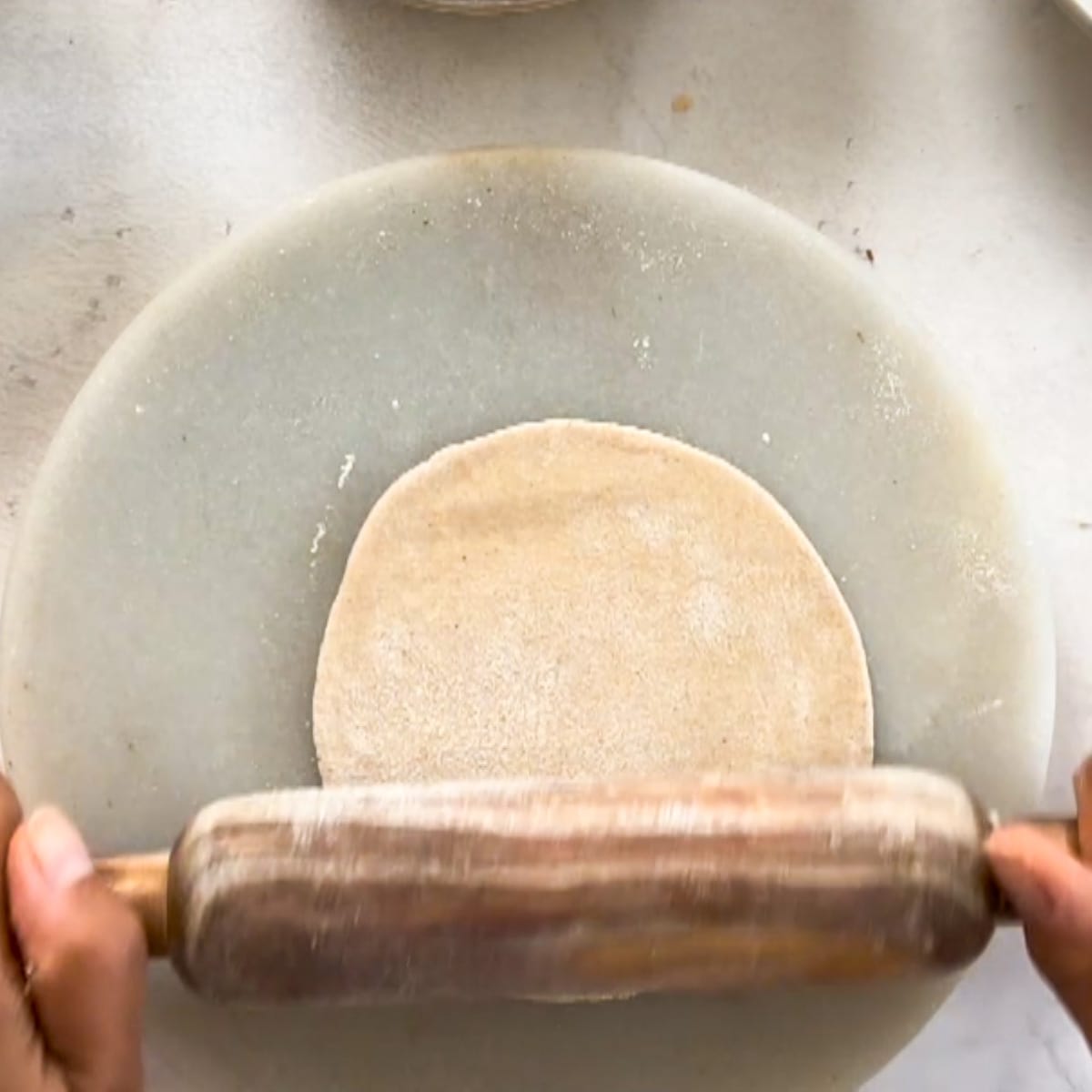
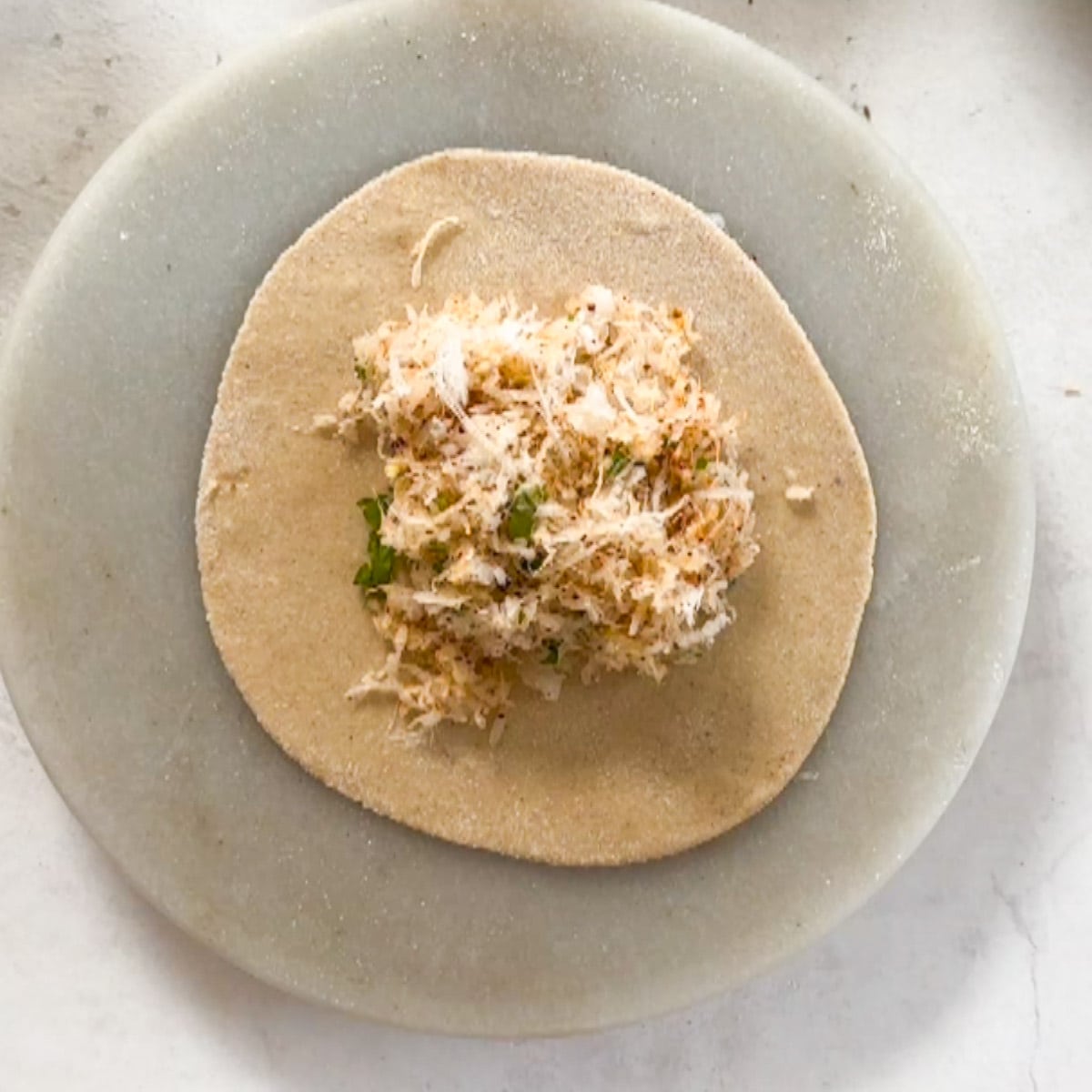
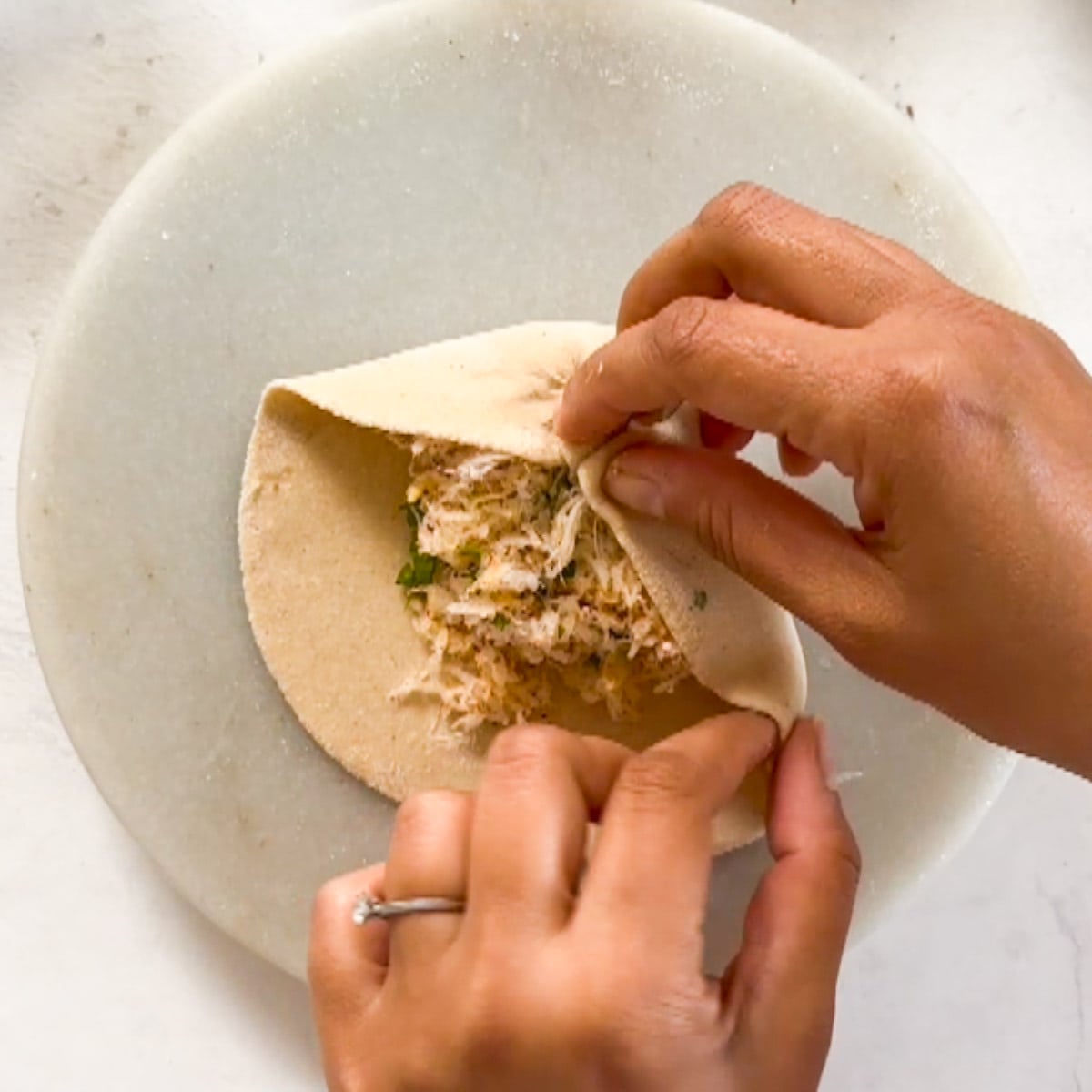
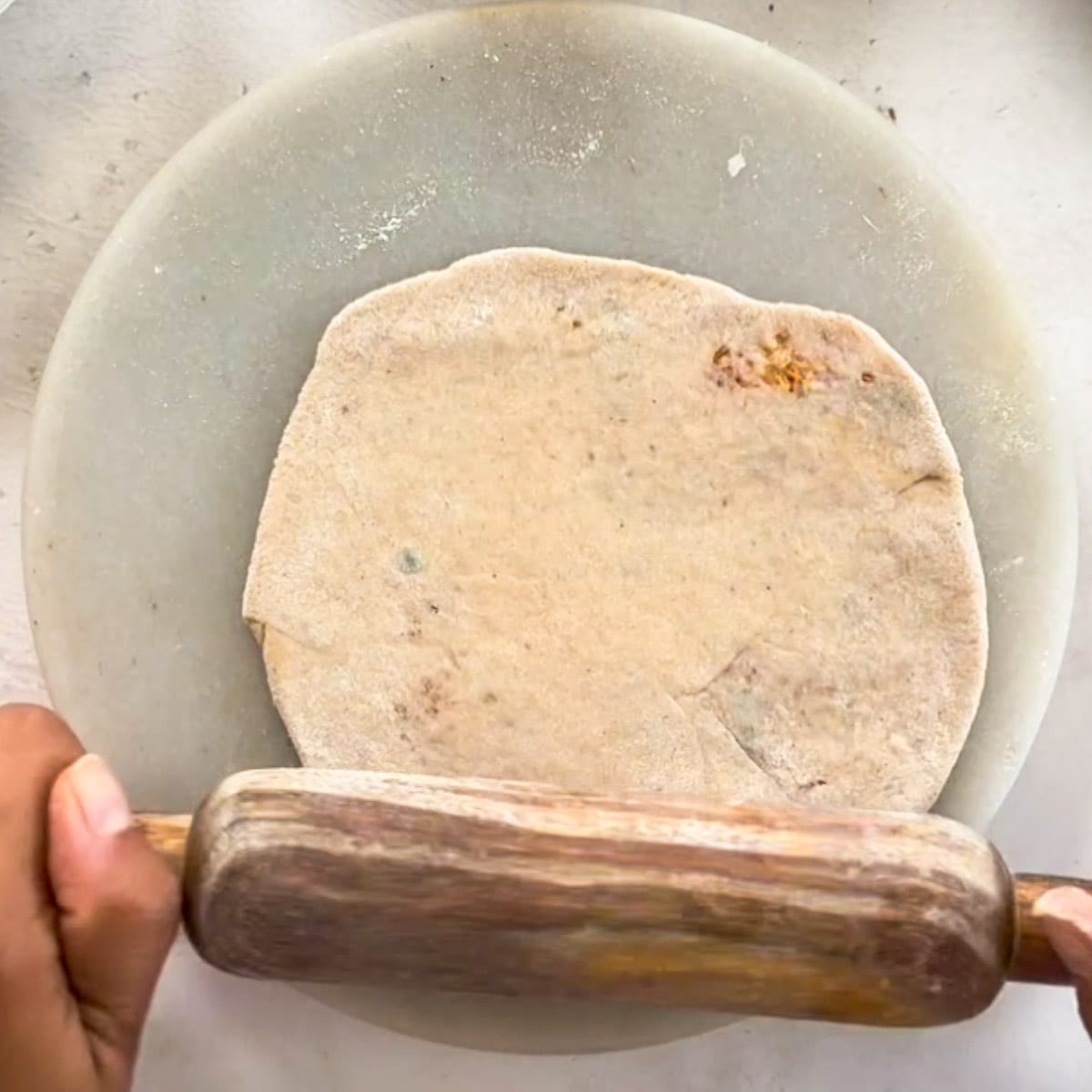
Roast the Paratha
Heat a tawa (skillet or griddle) and place the rolled paratha on it. Cook until small air pockets appear and the color of the dough starts changing.
Flip the paratha and spread some ghee or vegetable oil on top. Cook until there are brown spots on the paratha.
Repeat the process on the other side, ensuring both sides have golden brown spots and the paratha is well cooked.
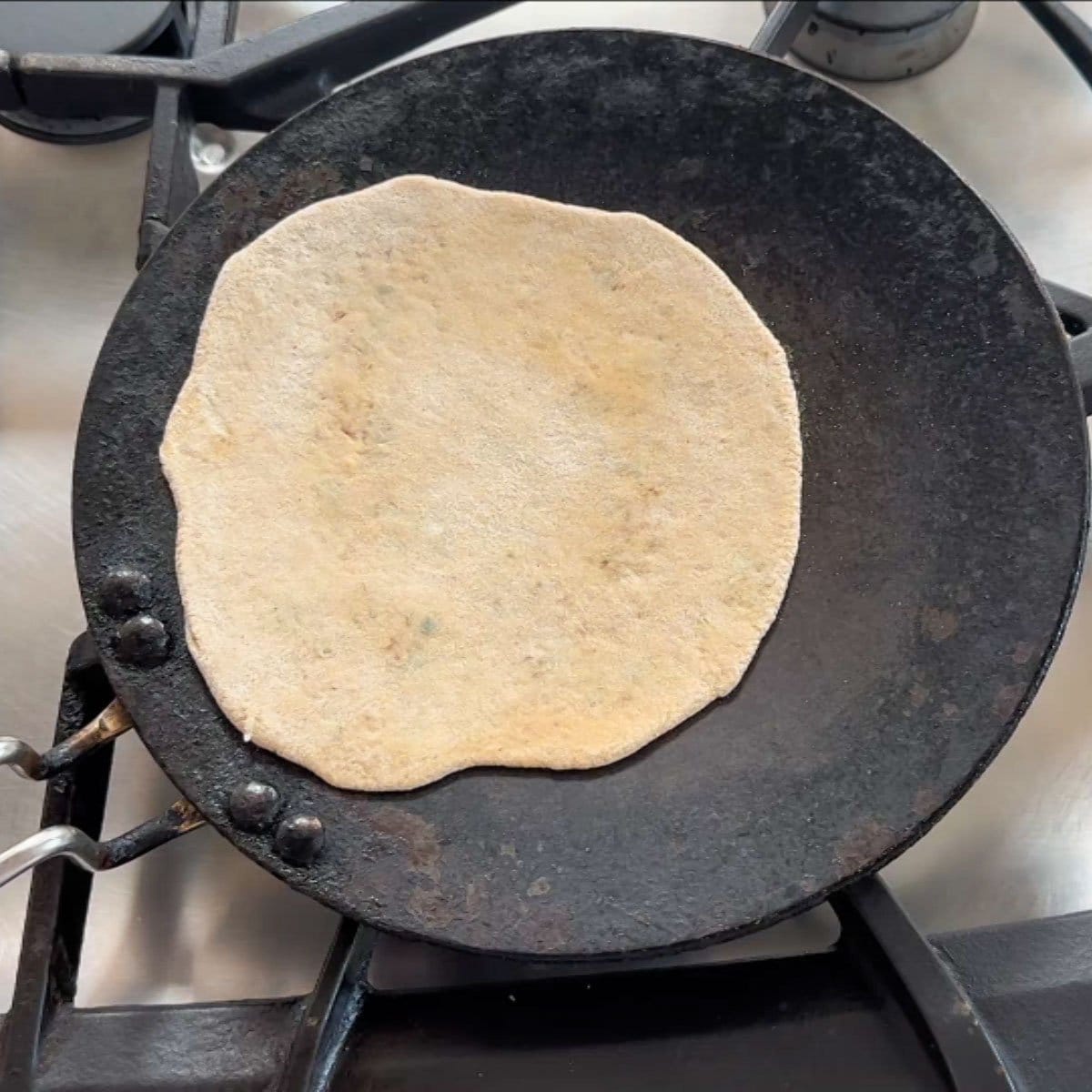
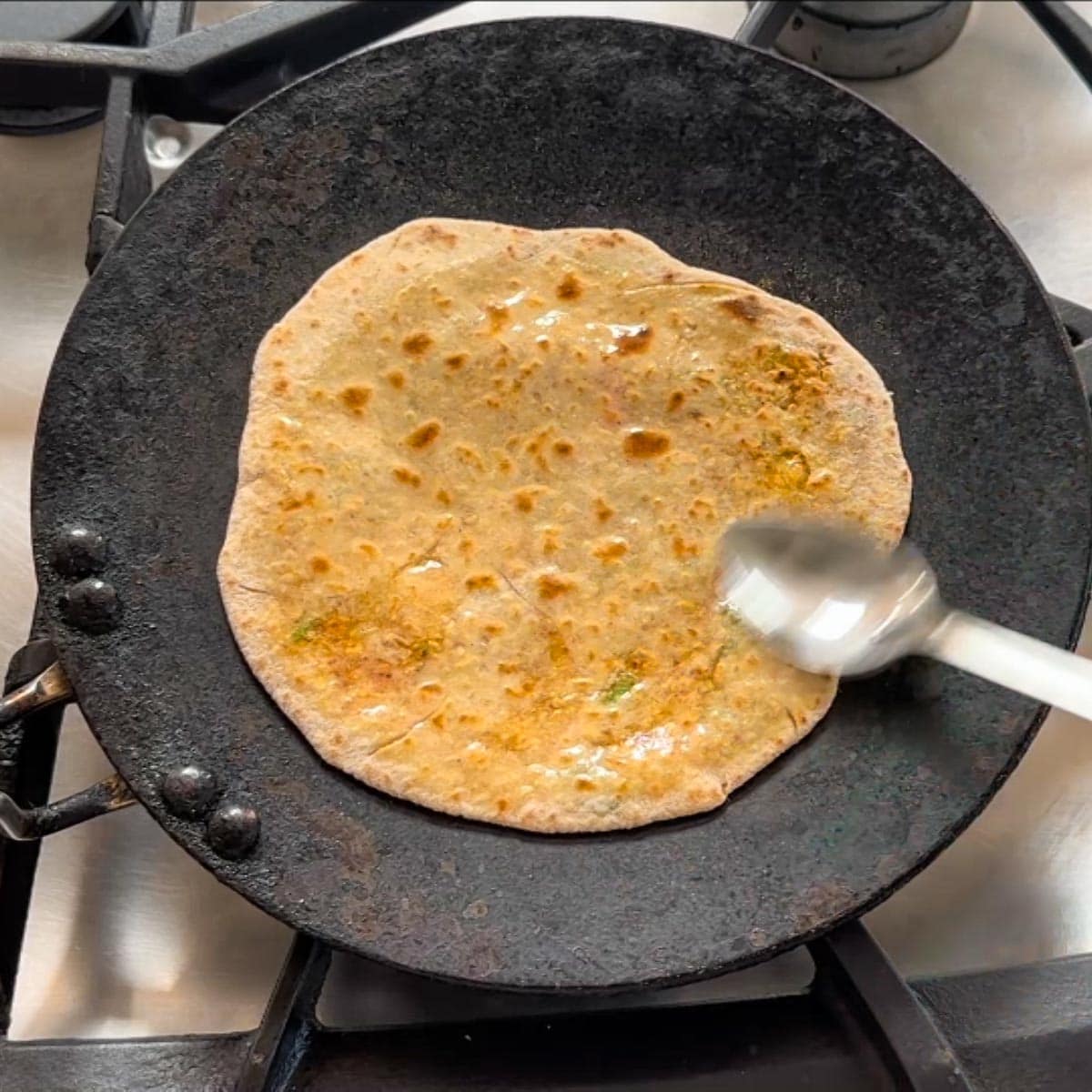
Transfer the cooked paratha to a plate lined with a paper towel. You can keep them warm in an insulated container or a roti basket wrapped in a towel.
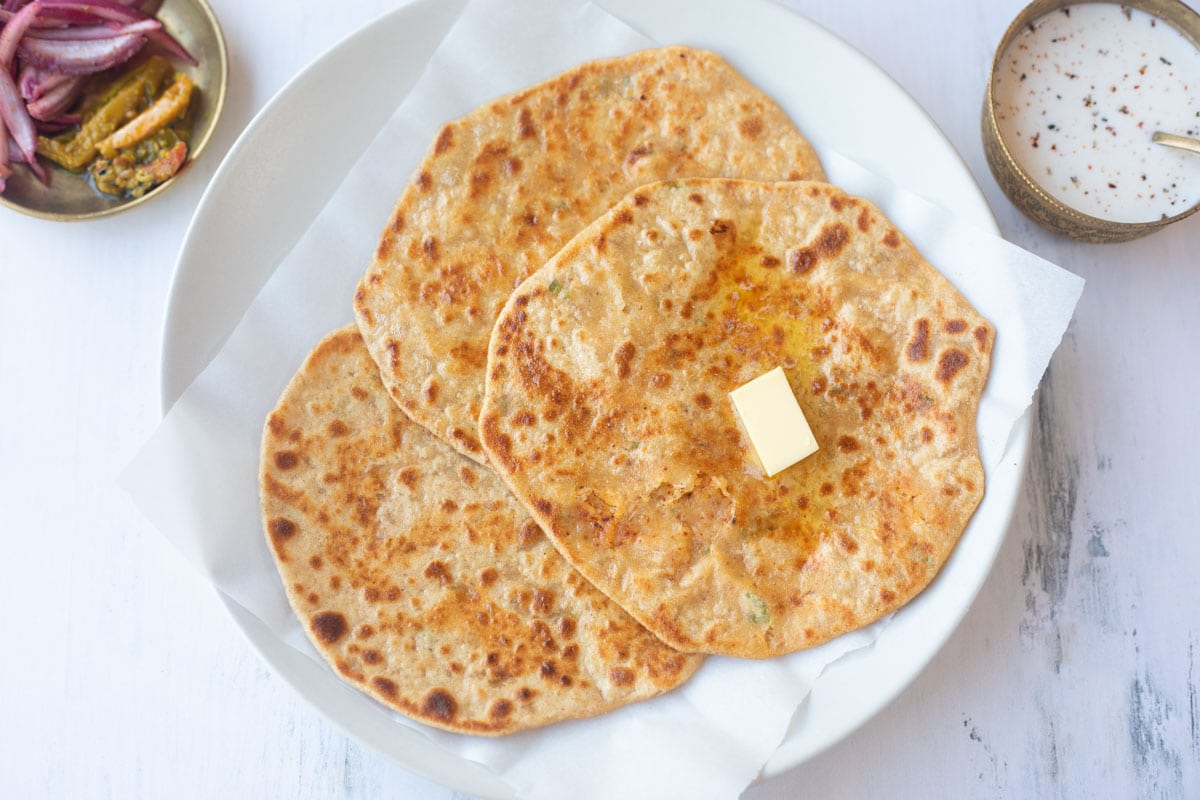
Mom’s Tips
Here are some of my mom’s tips to make perfect mooli parathas:
- Make sure to press the grated radish to remove all the moisture. Excess moisture in the stuffing can cause the parathas to break while rolling.
- Add salt to the radish filling just before making the parathas to avoid excess moisture.
- Knead the dough thoroughly until soft and smooth. Rest the dough before rolling it to get soft parathas.
- It’s tempting, but avoid overstuffing the parathas as the filling will come out. Roll the parathas slowly to prevent tearing and the filling from coming out.
- The griddle/ tawa has to be hot enough for the parathas to be soft and crispy.
- It’s best to cook the parathas over medium-high heat. Cooking on low heat will not produce crispy parathas.
- For a vegan version, use your favorite vegetable oil instead of ghee.
Expert Tips
How to Serve Radish Paratha?
It is best to serve parathas hot straight from the tawa/griddle.
In the Indian state of Punjab, it is traditionally eaten with a dollop of freshly made homemade butter and sweet lassi.
But the usual pairings for the paratha are plain yogurt or raitas like boondi raita, cucumber raita, etc.
Parathas also pair well with chutneys and pickles – mint cilantro chutney, ginger chili pickle, mango pickle, lime pickle, etc., are my favorite go-to options.
Some people enjoy parathas with a hot cup of masala chai.
How to Store?
Serve the Mooli Parathas immediately for the best taste and texture. If you have leftovers, store them in an airtight container in the refrigerator for 2-3 days. Reheat them on a tawa before serving.
Make Ahead
If you want to cook ahead of time, say for a dinner get-together, you can semi-cook (half done) the parathas without the oil. You can cool and store them in parchment paper and foil and refrigerate them for a couple of days. And when ready to serve, heat them and finish roasting with ghee/oil.
Can These Parathas Be Frozen?
Yes, Mooli Parathas can be frozen. After cooking them, allow them to cool completely. Then, stack the parathas with a layer of parchment paper in between to prevent sticking. Place them in an airtight container or a freezer bag and store them in the freezer for up to a month.
When you want to eat, take out the frozen paratha and cook it on a hot griddle using oil/ ghee until both sides are perfectly golden brown.
More Punjabi Recipes You’ll Enjoy
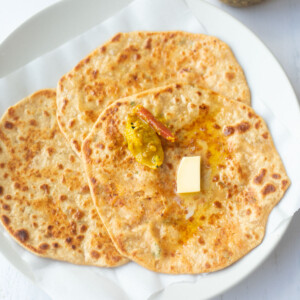
Mooli Paratha (Radish Stuffed Flatbread)
Video
Ingredients
For the Dough
For the Stuffing
- 1 White Radish (Mooli, Daikon), large
- 1 teaspoon Ginger, grated
- 1-2 Green Chili Pepper, finely chopped, optional
- 1/2 teaspoon Red Chili powder (Mirchi powder), adjust as desired
- 1/2 teaspoon Ground Cumin (Jeera powder)
- 1/4 teaspoon Carom seeds (Ajwain)
- 1/2 teaspoon Salt, add more to taste
- 2 tablespoon Cilantro leaves, finely chopped
To pan fry
- 4 tablespoon Ghee or Oil
Instructions
Make the Dough
- In a large bowl, combine atta (whole wheat flour), 1 teaspoon oil and salt.
- Add enough water (in small increments) and knead to make a soft and smooth dough. Make the dough smooth by kneading it with your fist. Add some water to your hand and knead 2-3 times. When you press your finger against the dough, it should leave an impression. This is the right consistency of the dough.
- Cover with a damp cloth or plastic wrap and let the dough rest for at least 15 mins and up to 30 mins while you prepare the filling.
Make the Mooli Stuffing
- Peel the skin of the radish using a peeler. Cut the top and tail of the radish.
- Using a grater, grate the radish in a plate/bowl. Use the medium grate. Set it aside for 15-20 minutes. Then squeeze the water from it by pressing between your palms. You can also use a muslin cloth and place the grated radish in it, then squeeze the water. (Note: This is an important step to remove the moisture from the grated radish)
- Combine all stuffing ingredients to the mooli. Mix well.
Rolling the Paratha
- Make equal portions of the dough (about 55-60 grams). Roll with your palms into a smooth ball and flatten it. Dust the dough ball with dry flour. Roll it out into a 5 inch disc with a rolling pin.
- Next, optionally spread some ghee on the rolled dough. Then scoop some stuffing in the centre of the disc, leaving about 1 inch of space from the sides.
- Gather the edges, form pleats and form a smooth ball out of the stuffed dough. When the pleating is complete, the stuffing will not be visible and it'll look like a dumpling.
- Next, flatten this dumpling in the center, sprinkle some flour and roll it evenly.
- While rolling the dough, use light and even pressure to prevent the paratha from breaking. Roll from one side to the other, dusting with dry flour as needed.
- If by chance any filling comes out, simply cover the torn end with a small piece of dough. The paratha is typically 7-8 inches in diameter.
Making the Paratha
- Heat the tawa (skillet or griddle). Place the rolled paratha on the hot tawa. Cook until you start seeing small air pockets and the color of the dough starts to change.
- With a flat spatula, flip the paratha and top with ghee just enough to make the surface of the paratha greasy (about ½ teaspoon). Spread the ghee or vegetable oil evenly over the paratha with the back of the spoon. Now we want to cook until there are some brown spots on the paratha.
- Flip the paratha and top with ghee/oil on the other side. Spread it evenly over the surface. Cook until there are brown spots while pressing gently with the spatula.
- Spread ghee/ oil on the second side and press the edges of the paratha till it is evenly brown and well cooked.
- When both sides have golden brown spots, transfer the paratha to a plate lined with a paper towel.
- Repeat these steps till all the parathas are cooked. You can keep parathas in an insulated container or in a roti basket wrapped in a towel. This will ensure they stay warm by the time you are ready to eat. Serve hot with white butter, pickle, raita or a cup of hot chai.
Notes
- Make sure to press the grated radish to remove all the moisture. Excess moisture in the stuffing can cause the parathas to break while rolling.
- Add salt to the radish filling just before making the parathas to avoid excess moisture.
- Knead the dough thoroughly until soft and smooth. Rest the dough before rolling to get soft parathas.
- It’s tempting, but avoid overstuffing the parathas as the filling will come out. Roll the parathas slowly to prevent tearing and the filling from coming out.
- The griddle/ tawa has to be hot enough for the parathas to be soft and crispy.
- It’s best to cook the parathas over medium-high heat. Cooking on low heat will not produce crispy parathas.
- For a vegan version, use your favorite vegetable oil instead of ghee.
- Best flour for paratha: I prefer Sujata Chakki Atta or Aashirvaad Select Sharbati Atta or Aashirvaad Whole Wheat Atta.
